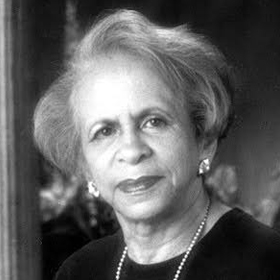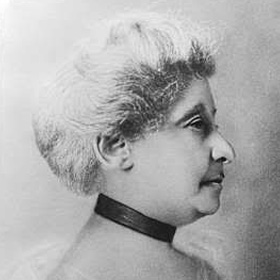A leading intellectual and deep religious thinker, Mary Rotch (1777-1848) remained true to her belief in the Light Within. Mary became a leader of the New Lights, progressive Quakers who believed in the Light Within as a sufficient guide, more important than the Old Light rules of organized religion. Disowned by New Bedford Friends in 1824, “Aunt Mary” united with Universalists and held fast to her convictions, refusing to participate in certain rituals and referring to the Supreme Being as “that Influence” instead of God.
A leading intellectual and deep religious thinker, Mary Rotch (1777-1848) remained true to her belief in the Light Within. Born into a Quaker family on Nantucket, her father was William Rotch and her mother, Elizabeth Barney. As a Quaker during the American Revolutionary War, her father remained a pacifist amidst pressure from fellow colonists. Prosperous in the whaling industry, William Rotch moved his business and family to France after the war, from 1790 to 1793, to avoid the losses from an increased British duty on imported whale oil from America. With the beginning of the French Revolution, the Rotch family moved to England through 1794, returned to Nantucket and moved to New Bedford in 1795. By the time Mary arrived in New Bedford at 18 years of age, she had experienced two revolutions and had lived in three countries.
In New Bedford, the Rotch family moved into “Mansion House,” their home on the northeast corner of Union and Second Streets. Mary lived in this home and cared for her aging parents until both died, all while rigorously pursuing her own intellectual development through reading, writing and attending lectures. Although Mary worshiped at the New Bedford Friends Meeting House and became an elder, she did not limit her reading to Quaker writers. Virgil, Locke, philosophers and mystics were all on Mary’s reading lists.
From 1812 to 1813, Mary and others formed a monthly discussion group that read books, wrote papers, and discussed ideas. Each group member would write anonymously and drop the writing into a box called the “Budget Box.” Submitted papers were then read aloud to the group. Mary’s contributions to this project included separate dissertations on five different virtues – Simplicity, Cheerfulness, Self-Control, Self-Examination, and Progressive Piety. Each composition reveals Mary’s ability to apply well-developed thought to action. In “Self-Examination,” Mary describes its process as, “That divine principle in the heart of man, the emanation from the Deity, that blessed power of conviction which follows error with the swiftness of light, and which may have been disregarded in the agitations of the day … – the amendment of life.” Mary puts forth her belief in the necessary continuous growth of the soul in “Progressive Piety,” where she insists that our piety is either progressing or receding.
During this time, Mary also began another project, the Fragment Society, a group that met weekly to make clothes for the poor. Members of the Fragment Society would sew from one o’clock in the afternoon until ten in the evening. They would then deliver the finished clothing to the less fortunate. During these activities, Mary would question why she was so blessed while others did not have basic comforts. This project was a natural application of the social justice ideas that Mary was reading and writing about.
By the early 1820s, New Bedford Quakers were split by tensions between Old Lights and New Lights. Old Lights followed the traditions of early 19th -century American Quakerism, including a strict written code of religious discipline that delineated what one could and could not do, say, and think. Old Light practices included strict pacifism, extreme plainness in dress, avoidance of music and dance, strict reliance on the Bible, and belief in the Devil. Mary, on the other hand, emerged as a leader of the New Lights, who believed in the Light Within as a sufficient guide, more important than the rules of organized religion. The New Lights believed that the Bible was less important than this Light Within, that the Old Testament was allegory, that the Devil did not exist. New Lights focused on the “inner light” within each person, that “still, small voice” that connects each to God.
In January 1823, Mary Newhall, a progressive New Light leader from Lynn, Massachusetts, who had been disowned by Lynn’s conservative Quakers, came to New Bedford to preach at the Friends Meeting House. Mary Rotch was in attendance with other liberal Quakers. While some New Bedford Old Lights denounced Newhall, Mary continued to travel with her, to attend Newhall’s sermons, stand in support during Newhall’s prayer and speak after Newhall spoke at these meetings. By March of 1823, elders began to examine Mary and her sister Elizabeth Rodman for their support of Newhall. A complaint was read in the women’s meeting stating that Mary Rotch and Elizabeth Rodman, due to their support of Newhall, were no longer qualified to be elders. In August 1824, New Bedford Friends disowned Mary Rotch, who next united with the Congregationalists, then the Universalists, who accepted many disowned Quakers. Throughout her life, Mary remained true to her convictions, refusing to participate in certain rituals and referring to the Supreme Being as “that Influence,” instead of God.
Known by family and friends as “Aunt Mary,” Mary particularly influenced two of her friends – philosopher Ralph Waldo Emerson and feminist Margaret Fuller. During his visits to New Bedford in the 1830s, Emerson was impressed by Mary’s quiet refusal to take communion, which became the subject of his most famous sermon – that inner truth is more important than outward ritual. In his journal, Emerson noted that Mary had learned to rely on her own inner strength, to be self-reliant, an idea that became central to Emerson’s thinking. Emerson was also impressed by Mary’s story about a little girl who asked her if she could do something questionable. Mary replied, “What does the voice in thee say?” After some time, the girl replied, “ . . . the little voice says no.” Mary’s story impressed upon Emerson that if we listen to our inner voice, we can know what is right and true, an idea that Emerson expressed in his essay “Greatness.”
By about 1840, Mary had also formed a close friendship with Unitarian feminist Margaret Fuller, who visited Mary in New Bedford and exchanged letters with her. As a confident unmarried woman who developed her own intellect, Mary served as a role model for Fuller. Mary’s “Ballot Box” discussion group may have influenced Fuller’s “Conversations,” a discussion group for women in which Fuller led talks about the role of women in society. Fuller’s association with transcendentalism, with its belief in personal transformation, may also be traced back to Mary’s focus on “the voice in thee” to realize this transformation. In 1842, Fuller wrote, “I take great pleasure in talking with Aunt Mary. Her strong and simple nature checks not, falters not . . . a rill struck out from the rock, clear and cool in all its course, the still small voice.”
In 1838, Mary had a house built at 47 South Sixth Street for herself and her companion Mary Gifford. She lived there and continued her association with the Unitarian Church until her death in 1848. The house was moved west in 1957 for the construction of Our Lady of Assumption Church.
Ann O’Leary, Emily Bourne Research Fellow
Information from
-
Grover, Kathryn. The Fugitive’s Gibraltar: Escaping Slaves and Abolitionism in New Bedford, Massachusetts. U of Massachusetts P, 2001.
-
Harper, Dan. “Mary Rotch, Quaker Turned Unitarian.” Yet Another Unitarian Universalist, vol. 1, 2005 2010, https://www.danielharper.org/blog/?p=1843.
-
Hill, Murray Gardner. “‘A Rill Struck Out from the Rock’: Mary Rotch of New Bedford.” Bulletin of Friends Historical Association, vol. 45, no. 1, 1956, pp. 8-23. JSTOR, www.jstor.org/stable/41944599.
-
New Bedford Whaling Museum Research Library Mss 2. Rotch Family Papers. https://www.whalingmuseum.org/collections/highlights/manuscripts/mss-2/.





